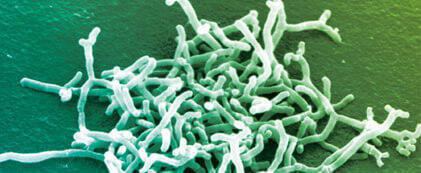Order Bifidobacteriales | Phylum Actinobacteria Scientific name Bifidobacterium longum Rank Species | |
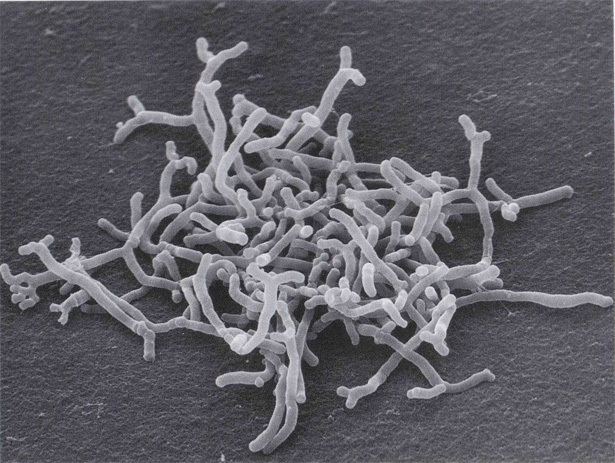 | ||
Similar Bifidobacterium, Bifidobacterium bifidum, Bacteria, Lactobacillus rhamnosus, Bifidobacterium breve | ||
Bifidobacterium longum is a Gram-positive, catalase-negative, rod-shaped bacterium present in the human gastrointestinal tract and one of the 32 species that belong to the genus Bifidobacterium. It is a microaerotolerant anaerobe and considered to be one of the earliest colonizers of the gastrointestinal tract of infants. When grown on general anaerobic medium, B. longum forms white, glossy colonies with a convex shape. While B. longum is not significantly present in the adult gastrointestinal tract, it is considered part of the gut flora and its production of lactic acid is believed to prevent growth of pathogenic organisms. B. longum is non-pathogenic and is often added to food products.
Contents
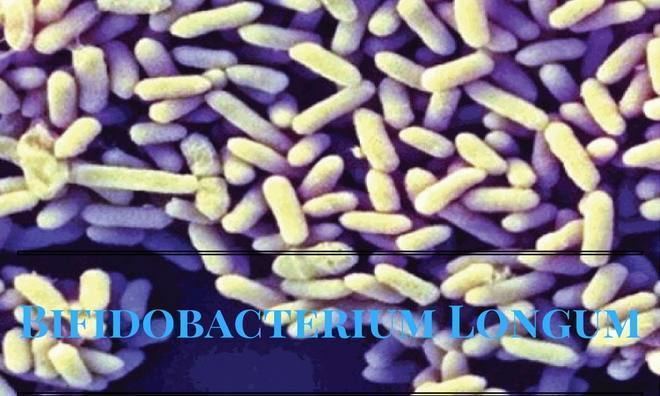
Classification
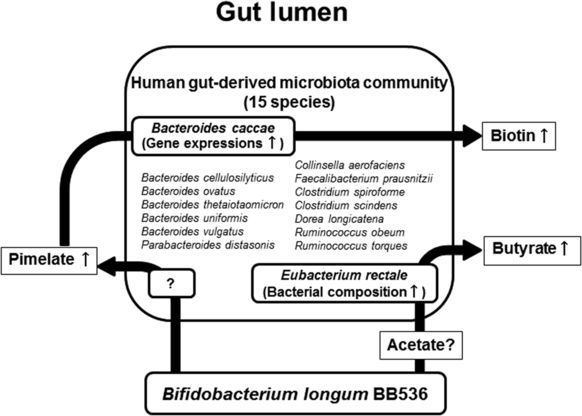
In 2002, three previously distinct species of Bifidobacterium, B. infantis, B. longum, and B. suis, were unified into a single species named B. longum with the biotypes infantis, longum, and suis, respectively. This occurred as the three species had extensive DNA similarity including a 16s rRNA gene sequence similarity greater than 97%. In addition, the three original species were phenotypically difficult to distinguish due to different carbohydrate fermentation patterns among strains of the same species. As probiotic activity varies among strains of B. longum, interest exists in the exact classification of new strains, although this is made difficult by the high gene similarity between the three biotypes. Currently, strain identification is done through polymerase chain reaction (PCR) on the subtly different 16s rRNA gene sequences.
Environment
B. longum colonizes the human gastrointestinal tract, where it, along with other Bifidobacterium species, represents up to 90% of the bacteria of an infant’s gastrointestinal tract. This number gradually drops to 3% in an adult’s gastrointestinal tract as other enteric bacteria such as Bacteroides and Eubacterium begin to dominate. Some strains of B. longum were found to have high tolerance for gastric acid and bile, suggesting that these strains would be able to survive the gastrointestinal tract to colonize the lower small and large intestines. The persistence of B. longum in the gut is attributed to the glycoprotein-binding fimbriae structures and bacterial polysaccharides, the latter of which possess strong electrostatic charges that aid in the adhesion of B. longum to intestinal endothelial cells. This adhesion is also enhanced by the fatty acids in the lipoteichoic acid of the B. longum cell wall.
Metabolism
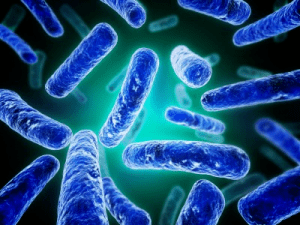
B. longum is considered to be a scavenger, possessing multiple catabolic pathways to use a large variety of nutrients to increase its competitiveness among the gut flora. Up to 19 types of permease exist to transport various carbohydrates with 13 being ATP-binding cassette transporters. B. longum has several glycosyl hydrolases to metabolise complex oligosaccharides for carbon and energy. This is necessary as mono- and disaccharides have usually been consumed by the time they reach the lower gastrointestinal tract where B. longum resides. In addition, B. longum can uniquely ferment galactomannan-rich natural gum using glucosaminidases and alpha-mannosidases that participate in the fermentation of glucosamine and mannose, respectively. The high number of genes associated with oligosaccharide metabolism is a result of gene duplication and horizontal gene transfer, indicating that B. longum is under selective pressure to increase its capability to compete for various substrates in the gastrointestinal tract. Furthermore, B. longum possesses hydrolases, deaminases, and dehydratases to ferment amino acids. B. longum also has bile salt hydrolases to hydrolyze bile salts into amino acids and bile acids. The function of this is not clear, although B. longum could use the amino acids products to better tolerate bile salts.
Research

B. longum is a constituent in VSL#3. This proprietary, standardized, formulation of live bacteria may be used in combination with conventional therapies to treat ulcerative colitis, and requires a prescription.
Immune system regulation
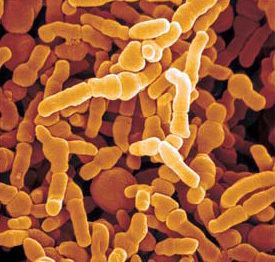
The use of B. longum was shown to shorten the duration and minimize the severity of symptoms associated with the common cold with a similar effect to that of neuraminidase inhibitors for influenza.

